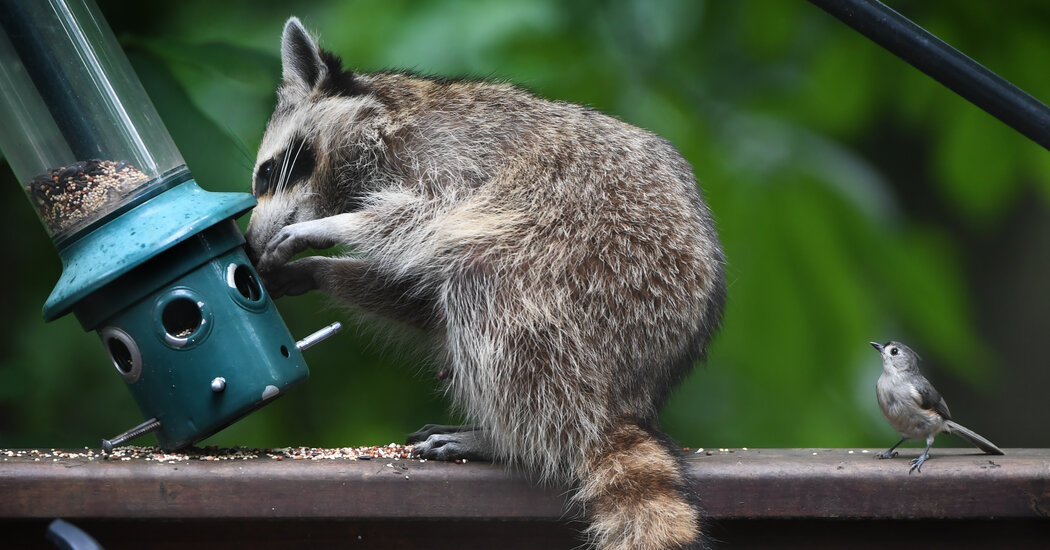As anyone who has ever tried to eat french fries on a beach will attest, stealing is not an uncommon behavior among birds. In fact, many birds are quite skilled at bold and brazen theft.
Scientists have documented several species of birds, including magpies, bowerbirds, and black kites, looting everything from discarded plastic to expensive jewelry to decorate their nests. And then there are birds who want hair, and will go to great lengths to get their beaks on it.
Hair from dogs, raccoons and even humans has been found in the nests of birds, which scientists believe makes the nests better insulated. For a long time, scientists assumed that birds had to collect hair that had been shed or scavenge it from mammal carcasses. However, a new study, published last week in the journal Ecology, shows that several species of bird, including chickadees and titmice, don’t just scavenge hair, they steal it.
The study, based largely on analysis of YouTube videos, shows numerous examples of birds pulling tufts of hair from living mammals, including humans. This phenomenon, which the study’s authors have dubbed “kleptotrichy,” has been well-documented by birders on the web, but this is the first time scientists have formally recognized it.
“This is just another example of something that was overlooked in the scientific literature but was common knowledge in the bird watching and bird feeding community,” said Henry Pollock, a postdoctoral researcher in ornithology at the University of Illinois and co-author of the new study.
Last spring, Dr. Pollock was participating in his university’s annual spring bird count when a tufted titmouse caught his eye. It was flitting near a raccoon sleeping soundly on a tree branch, inching closer and closer to it. Then, to Dr. Pollock’s amusement, the tiny bird began plucking tufts of the raccoon’s fur. The titmouse managed to steal over 20 beak-fulls of the raccoon’s fur without waking it.
After witnessing this adorable act of thievery, Dr. Pollock began scouring the scientific literature to see if something similar had ever been documented.
He only found 11 recorded cases of birds stealing hair from living mammals, which included reports of honeyeaters plucking hairs from koalas and one observation from 1946 of a titmouse plucking hair from a red squirrel’s tail. Dissatisfied, Dr. Pollock started searching for examples of this behavior outside of the scientific literature. This proved much more fruitful. A simple search on YouTube yielded nearly a hundred videos of birds making off with the fur of mammals. Ninety-three percent of the videos Dr. Pollock found depicted tufted titmice plucking hair from domestic dogs and humans (without a lot of success in that case).
The remaining seven percent of videos featured Parids, the family of birds that includes tits, chickadees and titmice, sneaking up and stealing hair from raccoons, cats, dogs and in one video, a North American porcupine. It became clear to Dr. Pollock that this behavior was not only widespread, particularly among Parids, but it was also well known among those who are enthusiastic about birds.
“I’ve seen it personally,” said Daniel Baldassarre, an assistant professor at SUNY Oswego who studies the behavioral ecology of urban birds. “I used to live somewhere where I had bird feeders on my porch railings and my yellow lab would sit out on the deck and chickadees would land on him and pull his fur right off,” said Dr. Baldassarre, who was not involved in the study. “It’s the cutest thing you’ve ever seen.”
Dr. Baldassarre isn’t surprised that kleptotrichy appears to be common among Parids because the birds in this family are “the type of species that would figure this behavior out. They’re very bold, exploratory and smart.”
Both Dr. Baldassarre and Dr. Pollock suspect that the birds committing these acts of theft to insulate their nests. Tufted titmice and other Parids “nest in early spring when the weather is still pretty cold, so being able to keep the nest warm is definitely important,” Dr. Baldassarre said. A survey of scientific literature about 51 Parid species’ nests found mammal hair in 44. The seven species with fur-free nests all live in areas with warmer climates.
Dr. Pollock hopes that further research will help scientists determine the costs and benefits of kleptotrichy and determine how widespread it is among birds. He also hopes that this study will demonstrate the value of community knowledge and other nontraditional sources of information.
“As a scientist, you have to be open to exploring alternative sources of information. I think that the utility of the popular literature is often underappreciated, and the bird-watching community especially is often underappreciated.”
Source: Read Full Article
